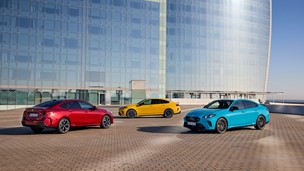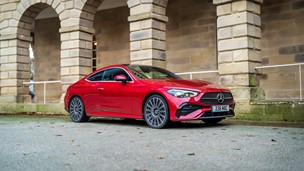Many manufacturers have taken up the idea of creating high-economy, low-CO2 cars within the last couple of years, but few with quite the same level of enthusiasm as Volvo. If you include different trim levels and one or two other choices which we'll come to shortly, the Swedes have created no fewer than 28 models bearing the title DRIVe (which, in case you were wondering, is pronounced "drive-ee").Of the 28, the car tested here is likely to be one of the most popular. Like many other DRIVe Volvos, it has a 1.6-litre turbo diesel engine which produces a maximum of 108bhp. That's not a spectacular output in a car of this size, so don't expect to be able to tear up the tarmac, and in particular make sure you plan your overtaking moves carefully. The V50 is not a car that was ever likely to be bought by boy racers, though (the major controls are ponderous in operation and the handling could not possibly be described as sharp), but for gentle everyday driving the available power is adequate.The economy and CO2 figures are more than adequate. A lot more. In some forms the V50 DRIVe manages 62.8mpg on the official combined fuel consumption cycle, and emits 119g/km of CO2. But other versions, including this one, are fitted with a start/stop system which cuts the engine when the car comes to rest (assuming certain conditions such as battery charge are met) and fires it up again as you're pressing the clutch pedal.V50s fitted with the R-Design bodykit are not available with stop/start because there is no room for the extra battery the system demands, and Volvo has made it optional on the others. This is in the interests of giving customers a choice in the matter, but personally I'd probably go for stop/start. It adds £250 to the price of the car, and in return the economy and CO2 figures improve substantially to 72.4mpg and 104g/km respectively.The CO2 benefit is more a matter for your conscience than for your bank account. It moves the DRIVe's VED rating down from Band C to Band B, but that makes no difference to the amount of tax you'll be asked to pay right now (it's £35 in each case) and even under the new system due to be introduced in April 2010 the advantage will be just £10 (£20 for Band B, £30 for Band C). Fine if you plan to hang on to the car for at least a quarter of a century, but otherwise significant only if you want to take every opportunity to limit your carbon footprint.But how about that 9.6mpg improvement in fuel consumption? As you know (or see our features on Fuel Economy Testing and Fuel Economy And Bad Science if you don't), the official test is not a particularly reliable way of predicting how much diesel you will really use, but even with that in mind a difference of nearly 10mpg suggests a very significant trend. I can quite believe that start/stop will save you £250 in fuel costs in a reasonably short period, especially if you spend a lot of time driving in town or fuming in motorway traffic jams.It's difficult to compare the V50 DRIVe with any other model in the range because this is the only one with the 1.6 diesel engine. However, the next most economical V50 in SE trim is the 1.8 petrol, which is only slightly quicker and has economy and CO2 figures of 38.7mpg and 174g/km, and therefore comes in VED Band I with annual tax payments of £175 now and £200 from April 2010. On the other hand, it costs nearly £2000 less to buy, though the difference in value will probably be at least that when it comes to resale time.Apart from the engine, DRIVe models have such impressive fuel economy for various familiar reasons including a lowered ride height, better aerodynamics, low-friction transmission oil, low-rolling resistance tyres and electrohydraulic steering. By far the most visually obvious difference is the use of Diamond Cut Libra wheels which help with the aerodynamics. I don't find these at all attractive, but of course you can't see them when you're driving the car, and if they offend you beyond endurance you can always choose more conventional-looking alloys from the options list. Engine 1560 cc, 4 cylinders Power 109 bhp @4000 rpm Torque 177 ib/ft @1750 rpm Transmission 5 speed manual Fuel/CO2 72.4 mpg / 104 g/km Acceleration 0-62mph: 11.5sec Top speed 118 mph Price From £21646.00 approx Release date 01/06/2009

Our Rating



